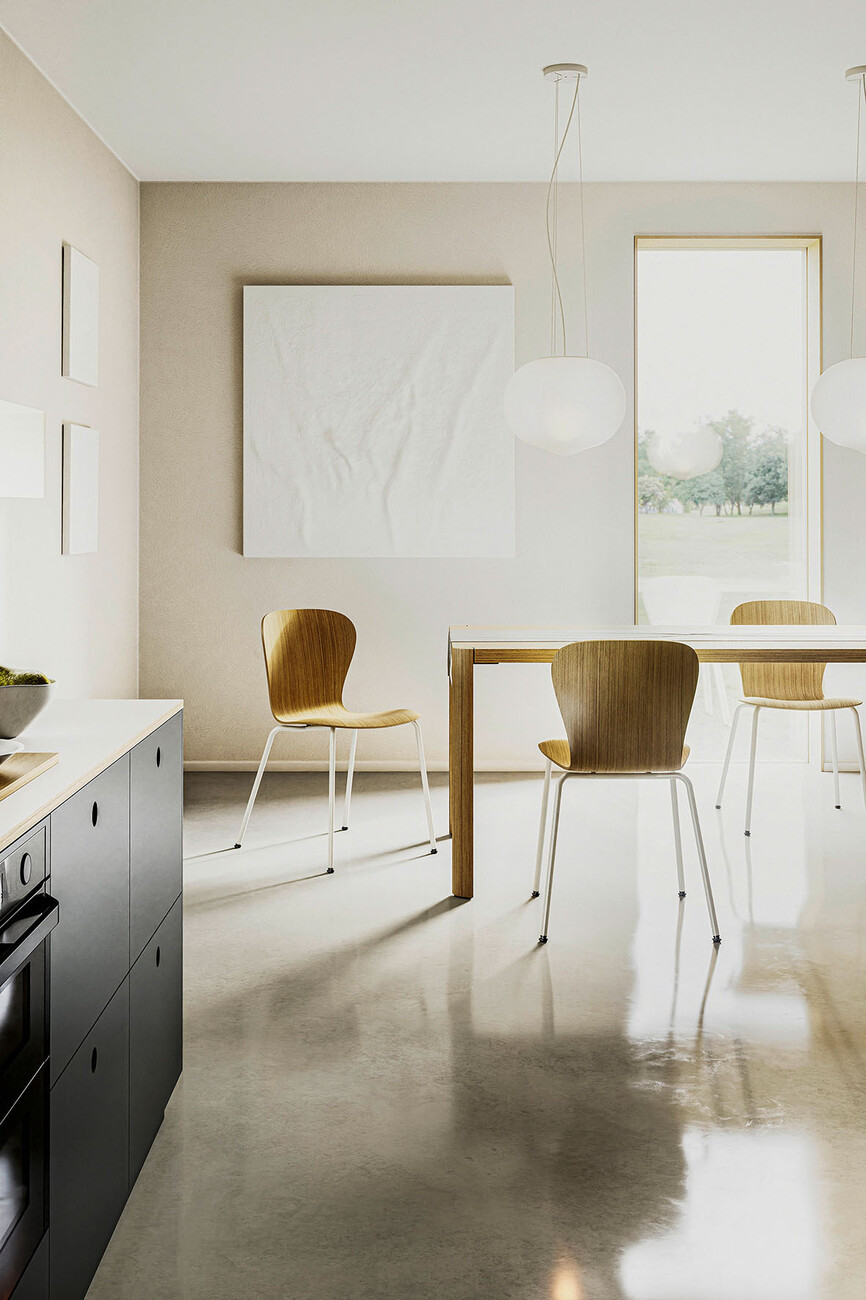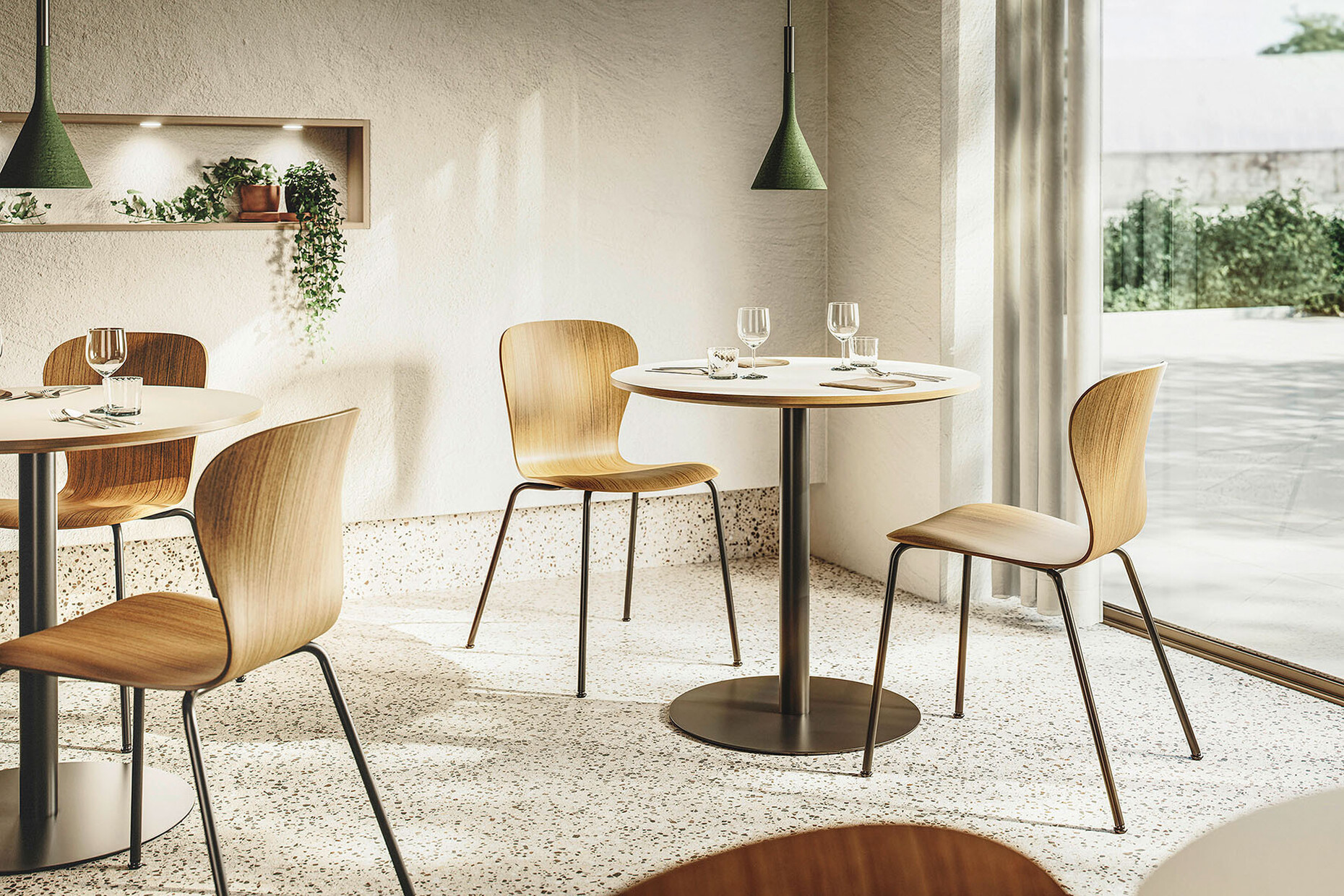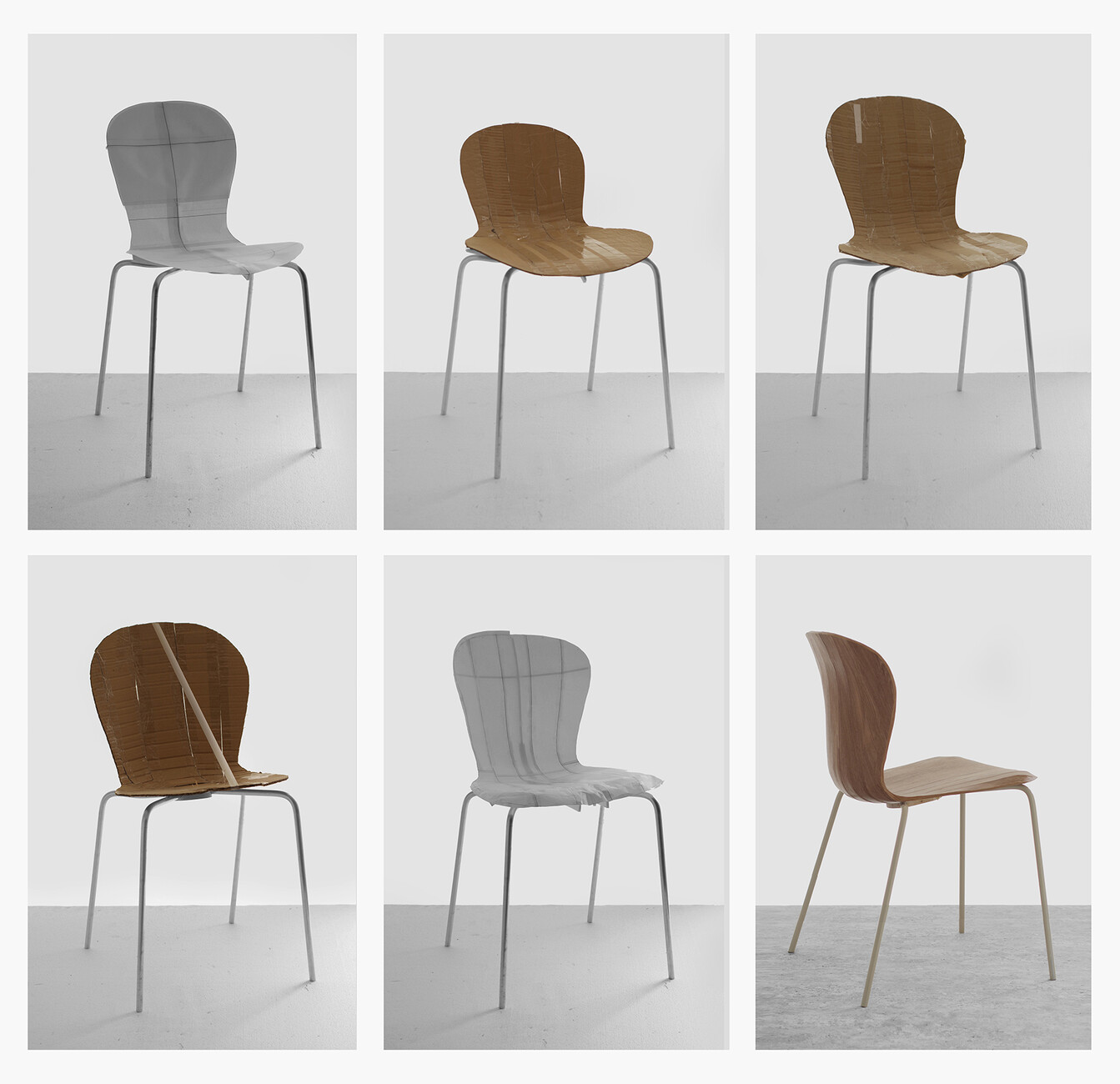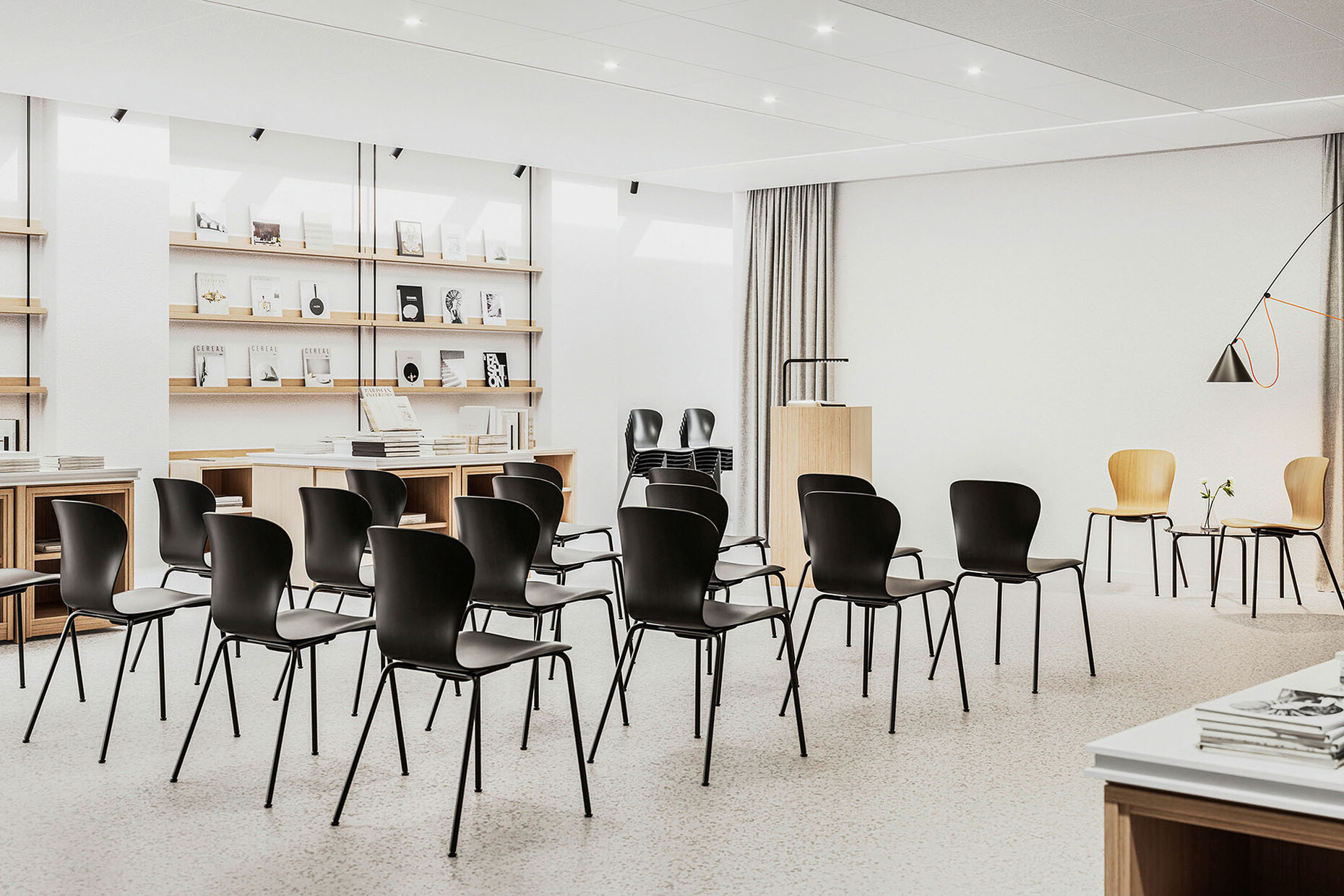Comfortable reference
Sam Hecht: We know Thonet's products very well; the 214, for example, is one of my favourite chairs. We talked to the company about further developing the existing forms and jointly found a design that fits into Thonet's portfolio.
Thonet chairs are timeless classics – so further development is a special challenge. What was important for you to convey in the result?
Sam Hecht: The task indeed required a certain sensitivity to the tradition of the Thonet company – we therefore wanted a reference to the existing work, not a fashionable new development. The graphic silhouette of the S 220 is so identical to that of the 209, except that in the latter it is formed from bentwood, and we have filled in the lines with moulded plywood, so to speak.
Looking at the material – from 1830 onwards, Michael Thonet experimented with gluing layers of veneer together. Do you refer to this with the construction of moulded plywood and tubular steel?
Sam Hecht: Thonet's knowledge of wood processing was definitely valuable for us. We pushed the moulded plywood to its limits for the construction. The bentwood material, on the other hand, is used for the armrests.
The shell has a waterfall edge that makes the seat more comfortable. Are there other details that accommodate the person sitting?
Sam Hecht: The waterfall edge of the seat shell ensures that you sit comfortably even when you are moving, for example when you turn sideways while sitting. The continuous backrest also contributes to the high comfort of the S 220. In addition, the chair is stackable. It is this combination of functionality and organic grace that I love about Thonet. The shape represents the human body, which also doesn't have a straight geometry. As I move on the S 220, the chair's presence changes. At the same time, the expression of the form in the space is not too expressive.
Does the number 220 have a special meaning?
Sam Hecht: No, the number was given by Thonet, it is based on an internal system.
To what extent will the S 220 chair family be further developed?
Sam Hecht: In addition to the current tubular steel frame, we are planning other versions. We are currently developing a stool version.
Your design spectrum ranges from furniture to everyday objects – useful, aesthetic, with rounded edges, and not too excited in expression. They are companions rather than sculptures. Do we pay too little attention to the design of the everyday?
Sam Hecht: I think we as designers pay a lot of attention to the everyday. It's just that a lot of it is not that good. (laughs) That's the problem. It's not a lack of attention, but a lack of accuracy, I would say. We have a responsibility to the customers and we should assume longer life spans for the products. Our design should be so interesting and useful that people will want to use it and it will stay in circulation for as long as possible.
Kim Colin is an architect, you are an industrial designer. You studied in different countries, in London and California. How do your different educations influence your furniture design?
Sam Hecht: The collaboration between us works very well because we are experts in different fields. Kim is very, very good at understanding the big picture and thinking about the importance of society, the community and the company when designing an object. I tend to look at the details and how the connections of the form work together. Of course, this means that we often disagree and discuss a lot, but I think that is the core of success.
When you founded Industrial Facility in 2002, you were looking for a new approach to design. Our reality has changed a lot since then, and so has the responsibility that lies on the designers. What is important for you to communicate about design today?
Sam Hecht: I think what is important to remember as a designer is that change happens at different speeds depending on the industry. The speed at which the form of furniture changes is basically very slow. The S 220 is still in essence a chair on four legs, but it has been adapted to modern conditions, to today's demands for comfort and universal usability, even in small rooms. Technology, for example, is developing much faster. You shouldn't expect furniture to change constantly, otherwise the designs will be out of balance with people's need for them. Our task is to react to change, not to bring change about.
What do you think we really need for a "New Work"?
Sam Hecht: I think the biggest promise of the office furniture industry right now is agility, which is a new phenomenon. It's the idea that you don't know what's going to happen in the next few months, let alone the next year, and yet you're always perfectly equipped for any situation. So there is the promise of mobility, ease, adaptability. At the same time, we are struggling with resource scarcity and an energy crisis, so we don't know to what extent we can realise this agility in the long term. For a "New Work" we have to take into account all the challenges we are currently facing.














